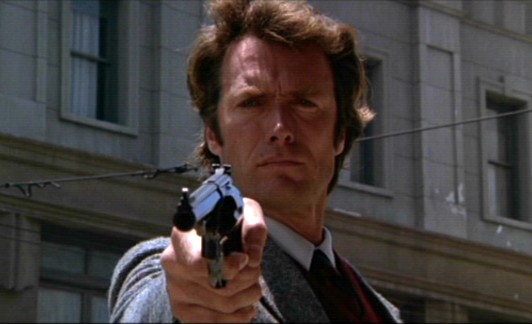
In the early 1980's as an officer in Houston, I used to work extra jobs with a fellow who had quite a collection of firearms. His name was Bill, and he had been a cop in Houston since the late 1960's.
One of his guns captivated me. It was a Model 29 .44 magnum Smith and Wesson, but it was lightweight! Now, Smith and Wesson did make lightweight revolvers since the 1950's, but the ones I have seen and owned were not made bigger than a .38 Special. I myself thing that one of the finest and safest concealed carry weapons is the Smith and Wesson Model 38 Bodyguard Airweight. But that's another topic.
The reason that the Bodyguard Airweight is so much lighter than it's all steel brethren is that the frame on the Airweight is aircraft aluminum. The barrel and cylinder are steel, but the resulting reduction in weight from the aluminum frame makes the airweight an easier and lighter concealed carry weapon. Made since the 1950's, it is recommended no +P ammo be used in them due to the lightweight frame. I've owned mine nearly 30 years and have shot regular .38 special ammo and have had no problems with it. It's still as tight as the day I bought it.
Of course, the Model 29 is the iconic Dirty Harry gun, the Most Powerful Handgun in the World. And at that time, it was. It was way too powerful for any type of urban policing use except for on TV, yet I knew officers who carried them in the 70's and 80's.
But the gun Bill had was special. It looked like the standard Model 29 with the 6 1/2 inch barrel pictured above, but it was significantly lighter than the standard pistol. I never weighed Bill's gun, but I would reckon it went empty for about 30 ounces, much lighter than the regular steel framed Model 29 which comes in at about 47 ounces unloaded.
I first saw the gun in 1980, and over the next several years was able to borrow that gun on several occasions for both hunting and target range use and to tell the truth, despite it's reduced weight, the recoil from .44 magnum loads was really not much worse than shooting the heavier steel Model 29. When you compare a lightweight J frame like the bodyguard to the all steel variety in .38 special caliber, the strong increase in felt recoil is immense between the steel and lightweight guns. The lightweight bodyguards are not unlike shooting lightning bolts from your hand. They kick and shoot quite a muzzle blast due to the short barrel.
But not so with the larger lightweight Model 29. For the most part, when I took it out in the field, I loaded it with .44 special solid bullets for the hog hunting we were doing on my friend's dad's rice farm. The farm was being destroyed by a large herd of hogs that had taken up residence in a hollow near my friends rice farm, and would literally destroy acres of rice at a time in their thrashing through his fields.
I joined other friends of his in a mass artillary attack on these hogs several times. Although I sported a rifle, I took this pistol as a backup, except I loaded it with specials. There was a significant reduction in recoil using the .44 specials, and that drastic reduction meant faster follow up shots on fast moving hogs. Frankly, although powerful, the magnums were just no fun to shoot.
The frame of this gun was definately made of aircraft aluminum, but the only other difference from the steel 29's that I recall was that the blueing was more blue than the black of all of the Model 29s I've seen from that period.
I wish I would have thought to have weighed the gun, or to have looked for a model number under the cylinder hinge. But my friends and I openly discussed with Bill the lightweight nature of the gun and the fact that he bought it in the 70's and that it did indeed sport an aircraft aluminum frame. Bill referred to it as The Model 29 Lightweight.
I've never found any reference to it online, but maybe I've looked in the wrong places. I have the Roy Jinks History of Smith and Wesson book, and could find no reference there.
I saw the gun. I know it existed. I know when I saw it. Other compentent and knowledgeable gun enthusiasts saw it and shot it along with me. We all recall it fondly. But as far as I can find out on the web, it wasn't until the early 1990's when Smith and Wesson reduced the weight of .44 magnums in their "Mountain Gun" series.
But again, as I often do, I digress. Does anyone know about this 1970's lightweight Model 29 of which I speak? Some friends suspect it's a prototype or something from their custom shop. I don't know. What I do know is that I tried to buy it and trade it for offers up to $1,000 back then, and I never could get Bill to part with it.
No comments:
Post a Comment